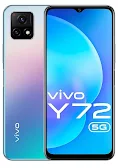Understanding Mobile Network Generations: From 1G to the Future of 6G
This comprehensive guide dives deep into mobile network generations, explaining their evolution from 1G's basic voice calls to the blazing speeds and transformative applications of 5G and the anticipated advancements of 6G. Discover the key features, timeline, and applications of each generation, empowering you to understand the ever-changing landscape of mobile technology.
1G (First Generation)
Timeline: 1980s
Key features: Analog cellular networks, offered basic voice calls and limited data transfer speeds up to 2.4 kbps.
Image of 1G mobile phoneOpens in a new window
2G (Second Generation)
Timeline: Early 1990s
Key features: Introduced digital networks (GSM, CDMA), enabled SMS, MMS, and improved data transfer speeds up to 144 kbps.
Image of 2G mobile phoneOpens in a new window
2.5G (GPRS - General Packet Radio Service)
Timeline: Late 1990s
Key features: Considered a stepping stone between 2G and 3G, offered basic internet browsing and email capabilities at speeds up to 56 kbps.
2.75G (EDGE - Enhanced Data Rates for GSM Evolution)
Timeline: Early 2000s
Key features: Improved data transfer speeds over 2G, reaching up to 236 kbps, enabled basic web browsing and file sharing.
3G (Third Generation)
Timeline: Early 2000s
Key features: Introduced mobile internet access, video calling, and faster data transfer speeds up to 2 Mbps, enabled video conferencing and music streaming.
Image of 3G mobile phoneOpens in a new window
4G (Fourth Generation)
Timeline: Mid-2000s (commercial deployments in 2009)
Key features: Offered ultra-broadband mobile internet access, streaming, and data transfer speeds up to 100 Mbps, enabled high-quality video streaming, online gaming, and mobile cloud computing.
5G (Fifth Generation)
Timeline: Commercial deployments started in 2019
Key features: Extremely high-speed mobile internet access, low latency, and data transfer speeds up to 20 Gbps, supports applications like virtual reality, augmented reality, and the Internet of Things (IoT).
6G (Sixth Generation)
Timeline: Expected in the 2030s
Key features: Under development, anticipated to provide even faster data transfer speeds (up to 1 Tbps), lower latency, and support for new applications like virtual reality, augmented reality, and artificial intelligence.
Mobile Network Generations
| Generation | Timeline | Key Features | Applications |
|---|---|---|---|
| 1G | 1980s | Analog cellular networks | Basic voice calls |
| 2G | Early 1990s | Digital networks (GSM, CDMA) | SMS, MMS, basic data transfer |
| 2.5G (GPRS) | Late 1990s | Basic internet browsing, email | Stepping stone between 2G and 3G |
| 2.75G (EDGE) | Early 2000s | Improved data transfer speeds over 2G | Basic web browsing, file sharing |
| 3G | Early 2000s | Mobile internet access, video calling | Video conferencing, music streaming |
| 4G | Mid-2000s (commercial deployments in 2009) | Ultra-broadband mobile internet access, streaming | High-quality video streaming, online gaming, mobile cloud computing |
| 5G | 2019 (commercial deployments) | Extremely high-speed mobile internet access, low latency | Virtual reality, augmented reality, Internet of Things (IoT) |
| 6G | Expected in the 2030s | Under development, expected to be even faster and support new applications | Virtual reality, augmented reality, artificial intelligence |





Comments
Post a Comment